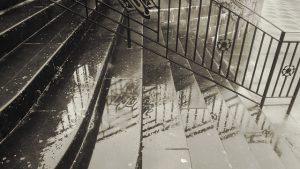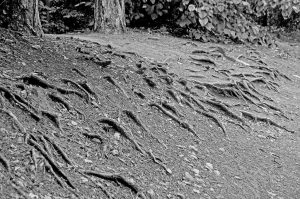 Why is it that Pastor Rick Warren’s (2002) book The Purpose-Driven Life is the bestselling hardcover non-fiction book in history, apart from the Bible? In a similar vein, but from a different background, Viktor Frankl’s (1962) Man’s Search for Meaning continues to sell strongly to this day. Perhaps because books like this remind us of our aching desire to shape our lives to trajectories that seem consequential (to us, and thus to our tribe, our culture) evaluated on how fulfilled we feel with our lot.
Why is it that Pastor Rick Warren’s (2002) book The Purpose-Driven Life is the bestselling hardcover non-fiction book in history, apart from the Bible? In a similar vein, but from a different background, Viktor Frankl’s (1962) Man’s Search for Meaning continues to sell strongly to this day. Perhaps because books like this remind us of our aching desire to shape our lives to trajectories that seem consequential (to us, and thus to our tribe, our culture) evaluated on how fulfilled we feel with our lot.
We are story-telling creatures, and our stories need to contain some narrative arc, some cognitive structure, some “meaning”. The psychologist Jerome Bruner argues that “it is through narrative that we create and recreate selfhood, self is a product of our telling and not some essence to be delved for in the recesses of subjectivity.”
Our sense of meaning and purpose, our values and motivations are based on the narratives we tell about ourselves and our world. Charles Taylor tells us that stories about self and society are how humans construct the “horizons of meaning” which then form the critical background for social relations and life choices. Narratives always represent a kind of movement in moral space. They are our way of constructing coherence and continuity in our lives.
The most important stories that we tell, retell, and reframe are the ones that we do not generally recognise as stories at all. We could call these “metanarratives.” These master stories are the stuff of ideologies, religions, nationalisms, and cultures. We do not recognise them as “stories” in the sense of events unfolding in a temporal frame but rather tend to take them as an unarticulated background, the taken-for-granted “truth” of the way things really are.
What is striking about these metanarratives is how closely their plots parallel and mimic the Christian chronicle. Just below the surface, we find the common threads of a secularized theology: a fall or awakening into sin, the redemptive quest, conversion and transformation, temptations to backslide, persevering in salvation, and an expectant hope for final happiness and fulfillment.
 Tim Smith writes in his book Moral Believing Animals: “So deep did Christianity’s wagon wheels wear into the ground of Western culture and consciousness, that nearly every secular wagon that has followed—no matter how determined to travel a different road—has found it nearly impossible not to ride in the same tracks of the faith of old. Such is the power of moral order in deeply forming culture and story.”
Tim Smith writes in his book Moral Believing Animals: “So deep did Christianity’s wagon wheels wear into the ground of Western culture and consciousness, that nearly every secular wagon that has followed—no matter how determined to travel a different road—has found it nearly impossible not to ride in the same tracks of the faith of old. Such is the power of moral order in deeply forming culture and story.”
What interests me in all of this is what we do when certain narratives and life-rules (often stated as small chains of narrative) start to dominate our lives in ways that cause us suffering. Here’s a narrative that dominates mine: if I am not writing everyday and publishing frequently then my life is worth naught. I might still be caring for others, and myself, learning and developing as a human being, enjoying many of the pleasures of being alive and conscious, but if this narrative is not being adhered to, even slightly, it’s all over.
I call this a ruthless and totalitarian narrative, a tyrannical narrative, because there is no space in it for slippage or imperfection. You may not share my specific totalitarian narrative, but I bet you’ve got some version of this which you follow. Whatever its focus, it is a narratives driven by a burning desire that will only settle for complete satisfaction, and it often chooses to do this in a life sphere where complete satisfaction is unattainable. Which to be fair, is pretty much every sphere of life.
“The perfectionist,” which is perhaps another name for someone ruled by ruthless and totalitarian narratives “is always an ever-failing god, never merely a struggling animal,” writes Adam Phillips in On Balance, hinting here at the implicit narcissism of our striving. Perfection is when the satisfaction demanded by our narratives is achieved; perfection is when there is no gap between desire and consummation. The only problem with desire is that it involves frustration; and frustration, whatever else it is, is an acknowledgement of incapacity.
 So rather than the ruthless and totalitarian narratives, what we ultimately need is a capacity for incapacity, for being animals (Great Apes) rather than gods.
So rather than the ruthless and totalitarian narratives, what we ultimately need is a capacity for incapacity, for being animals (Great Apes) rather than gods.
But how satisfying is this as a narrative? Not especially. Non-human animals lack narratives, which is why we denigrate them, and feel superior to them. And yet, they are satisfied more often than us living as they do without the pressures of narrative: no future goals to complete, no past failures to mourn. Incomplete satisfaction is our human animal fate, but this is not a project that is going to sell self-development books or make us feel any more at peace with our aspirations.

 I’m all for New Year’s resolutions.
I’m all for New Year’s resolutions.